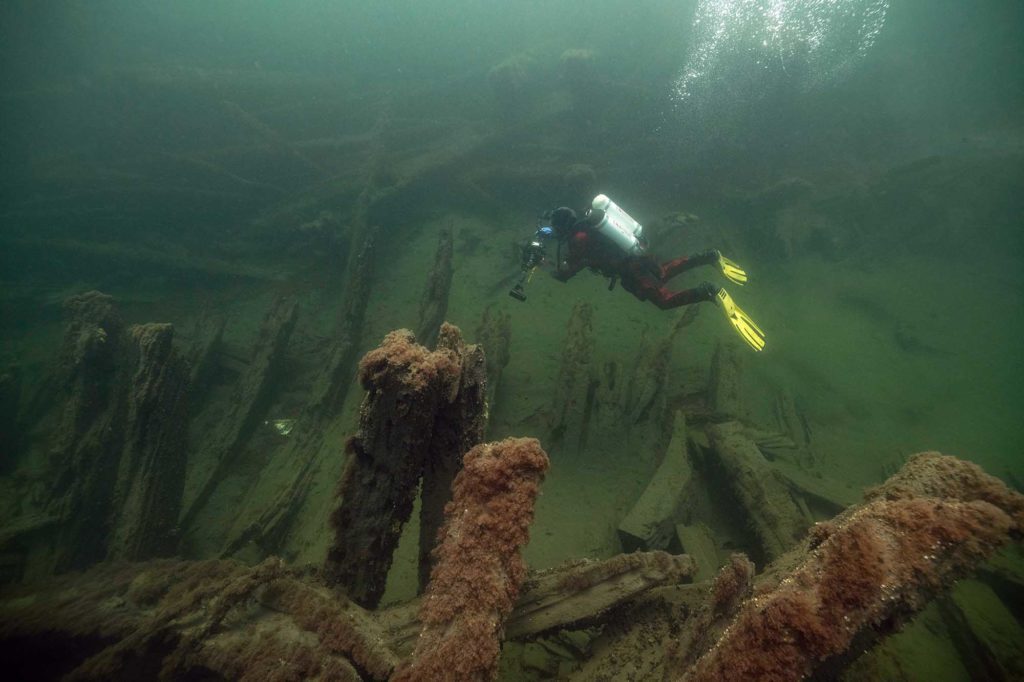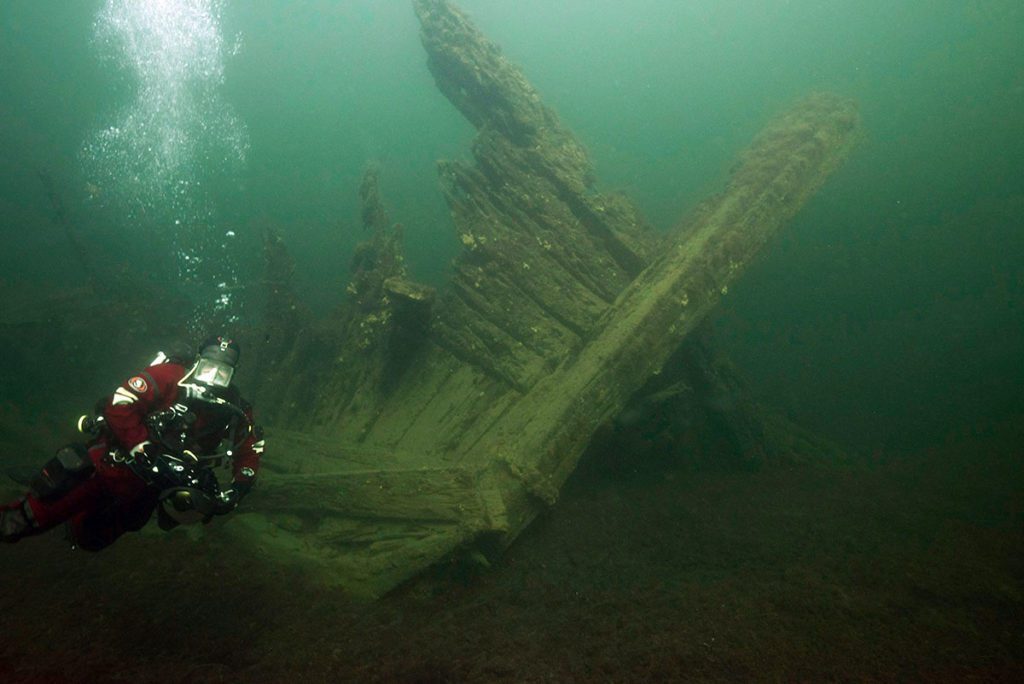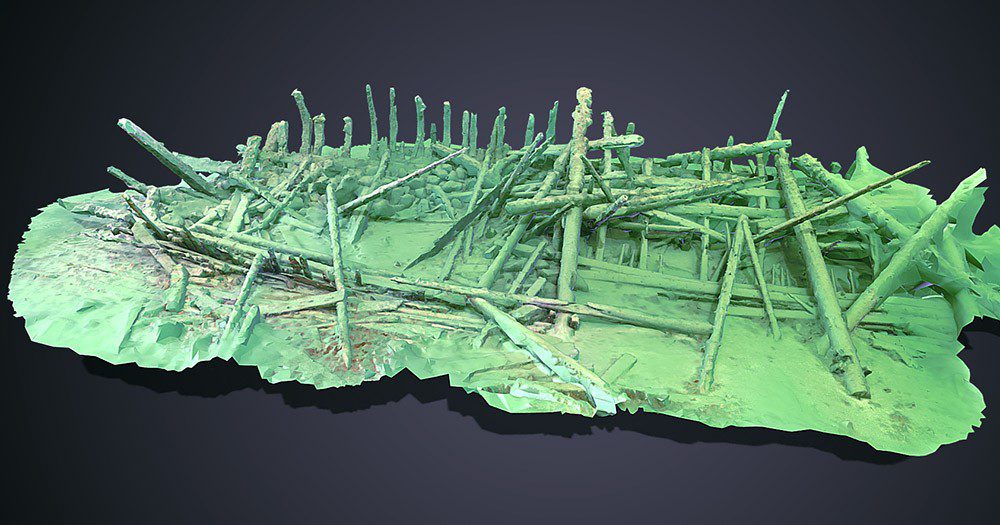Deprecated: Automatic conversion of false to array is deprecated in /home/837581.cloudwaysapps.com/gcahrcedfn/public_html/wp-content/plugins/link-whisper-premium/core/Wpil/Settings.php on line 3073
Maritime archaeologists from Vrak, the Museum of Wrecks in Stockholm, have explored and identified six 17th and 18th-century shipwrecks in the Baltic Sea off south-eastern Sweden – and the site is now set to form part of a diver trail later this year.
Also read: 20 Best Wrecks in the World
The vessels were sunk together over the space of 50 years in the Djupasund strait as blockships to protect the strategic naval port of Karlskrona against attacks from the sea, including by the English and Russians. But it is now known that many of them had enjoyed long, colourful careers before they were scuttled.
The work of some of Sweden’s most famous shipbuilders was represented among the vessels, some of which had taken part in naval battles with Russian and Danish fleets as well as expeditions to what was then called the Barbary Coast of north Africa and trade voyages to destinations as distant as China.


“To finally be able to identify these warships feels great – there are few equivalents to the barrier in Djupasund,” said Vrak marine archaeologist Jim Hansson. “It’s really cool to be able to link the wrecks and the remains to historical events, such as when the English fleet threatened Karlskrona. It gives an extra dimension to the place.”
The wrecks will form part of a new dive park planned for opening later this year in Karlskrona, which is a World Heritage site. “The Baltic Sea offers an ideal natural environment for dive parks, with well-preserved older wrecks and interesting natural environments,” says Vrak, which will make guided dives available for visiting divers.
Wrecks had long been known to lie at the bottom of Djupasund between the islands of Tjurkö and Sturkö, and multi-beam sonar surveys carried out in 2020/21 distinguished six of them, although their identities were unknown.
“With the aid of the survey, we were able to focus our archaeological efforts and document the wrecks more methodically,” said Vrak maritime archaeologist Patrik Höglund. Scuba divers obtained timber samples and all the findings were checked against archival data.
Having completed their investigation, the archaeologists determined that the six vessels comprise the third largest Swedish ship of the line in the 17th century, the 51m Enigheten (later called Konung Fredrik), built in 1696; the 48m ship of the line Wasa, designed by ”first naval architect” Fredrik Henrik af Chapman and launched in 1778; the 42m ship of the line Södermanland (later converted into the frigate Grip), launched in 1749; the 28m brigantine Pollux from 1741; the 24m “archipelago frigate” Disa, launched in Finland in 1764; and the small crown yacht Simpan, about which little is known.


The first ships sunk were probably Pollux and Enigheten in 1685, and as new threats arose these two were reinforced 25 years later by Södermanland, Disa and Simpan. Wasa, scrapped in 1827, was kept afloat until 1836, when it was sunk to complete the sea defences.
Other remains discovered among the shipwrecks include a stone pyramid and rows of piles and timber structures. In March Divernet reported on how Vrak divers had discovered a 12th-century underwater “barricade forest” near Karlskrona. Find out more about Vrak and the planned dive park here.

